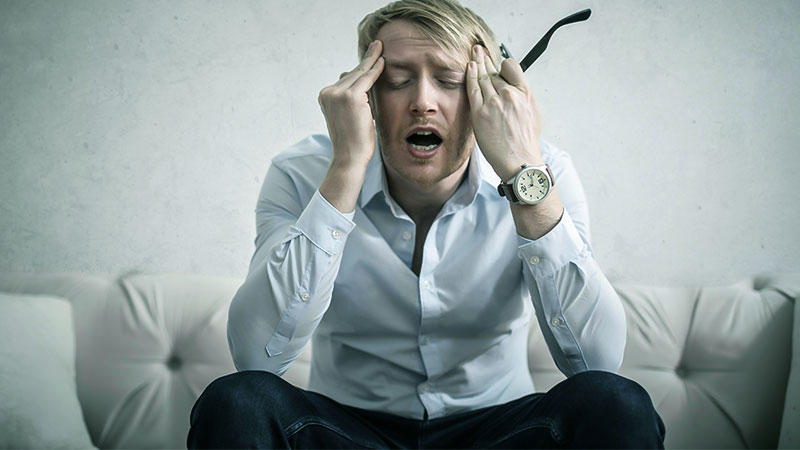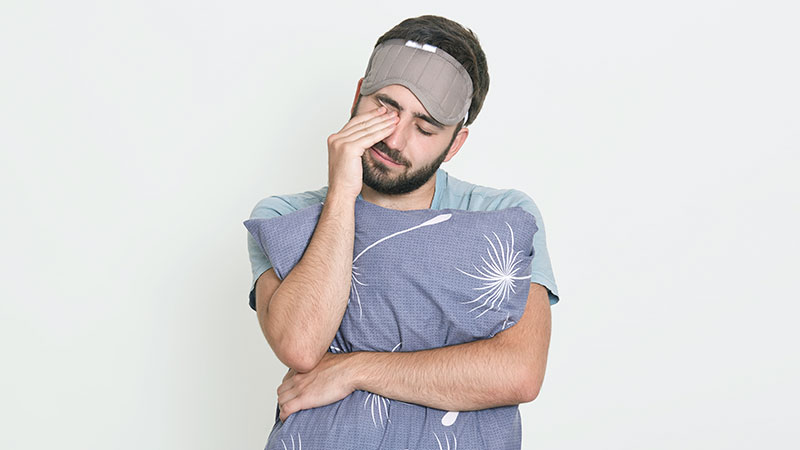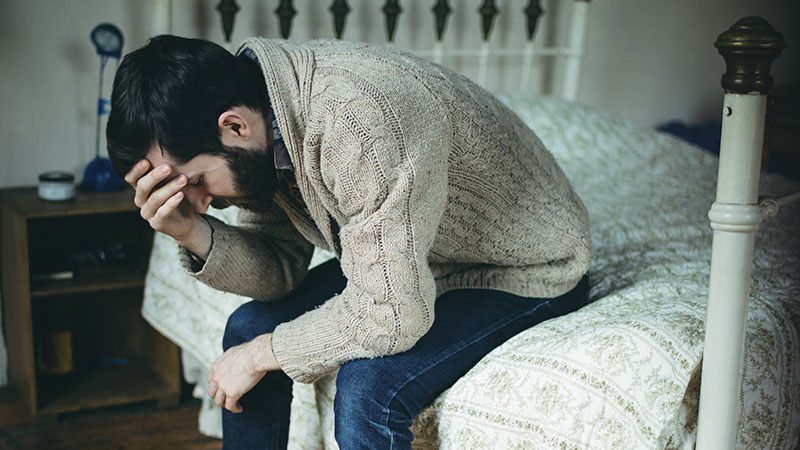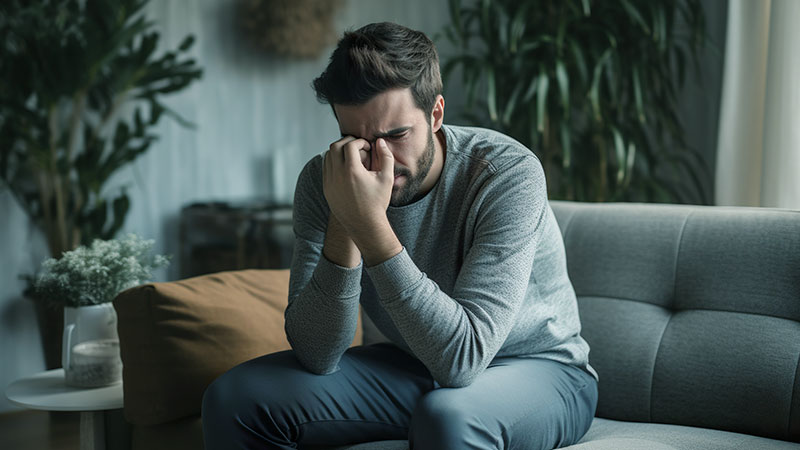Have you ever wondered what the signs and symptoms of anxiety are? Anxiety manifests in numerous ways, affecting both emotional and physical well-being.
Understanding these symptoms is essential for recognizing and addressing this common mental health condition.
Emotional signs of anxiety include excessive worry, feelings of dread, irritability, restlessness, difficulty concentrating, and feeling overwhelmed.
Additionally, anxiety can lead to physical symptoms such as rapid heartbeat, sweating, trembling, gastrointestinal issues, and headaches. Identifying these symptoms early can help in seeking timely intervention and management strategies.
By recognizing the varied manifestations of anxiety, individuals can better navigate their experiences and find appropriate support, ultimately improving their quality of life.
This blog post delves into the common signs and symptoms of anxiety to enhance awareness and understanding. So, stay focused.

Physical Symptoms of Anxiety
Anxiety can manifest through various physical symptoms, impacting different aspects of the body.
These symptoms often arise due to the body’s natural response to stress, known as the “fight or flight” response, which prepares the body to face a perceived threat.
Below are detailed descriptions of ten common physical symptoms of anxiety.
Rapid heartbeat
When anxiety strikes, the body’s autonomic nervous system kicks into high gear, often resulting in a rapid heartbeat.
This sensation, known as tachycardia, occurs because the body releases stress hormones like adrenaline, which increase heart rate to pump more blood to essential muscles.
This can be unsettling and might be accompanied by palpitations or a feeling of the heart pounding or fluttering. Rapid heartbeat due to anxiety is usually temporary but can be distressing, especially if it happens frequently or unexpectedly.
Shortness of breath
Anxiety can lead to shortness of breath or a feeling of being unable to breathe deeply. This occurs because anxiety stimulates the body’s sympathetic nervous system, which can cause hyperventilation or rapid, shallow breathing.
The sensation of shortness of breath can trigger further anxiety, creating a vicious cycle.
Often, this symptom can mimic the feelings of respiratory conditions, but it is typically resolved when anxiety levels decrease, either through relaxation techniques or the resolution of the stressful situation.
Sweating
Excessive sweating is a common physical symptom of anxiety, often occurring even in the absence of heat or physical exertion.
This happens because the body’s fight-or-flight response activates the sweat glands as a way to cool down in preparation for a perceived threat.
Sweating can occur in specific areas like the palms, feet, or armpits, or it can be more generalized.
While not harmful, this symptom can be uncomfortable and socially embarrassing, exacerbating anxiety in social or public situations.
Trembling or shaking
Trembling or shaking is another physical manifestation of anxiety. This occurs due to the body’s heightened state of alertness and increased adrenaline levels.
The muscles may contract rapidly and uncontrollably, leading to visible shaking or trembling in the hands, legs, or other parts of the body.
This can be particularly noticeable during high-stress moments, such as public speaking or facing a fear. While usually temporary, it can add to the feeling of being out of control.
Gastrointestinal issues
Anxiety can significantly impact the digestive system, leading to various gastrointestinal issues such as nausea, stomach cramps, bloating, diarrhea, or constipation.
The gut is often referred to as the “second brain” due to its extensive network of neurons, and it is highly sensitive to emotional states.
Stress hormones can disrupt the normal functioning of the digestive system, leading to these uncomfortable symptoms.
Persistent anxiety-related gastrointestinal issues may require a combination of stress management and dietary adjustments.
Headaches
Headaches are a frequent complaint among those experiencing anxiety. Tension headaches, in particular, are common and are characterized by a dull, aching pain around the forehead or the back of the head and neck.
These headaches are caused by muscle tension and stress, which can be exacerbated by anxiety. Additionally, anxiety can lead to migraines in some individuals.
Managing anxiety through relaxation techniques, adequate sleep, and sometimes medication can help alleviate headache symptoms.
Muscle tension
Chronic muscle tension is a common physical symptom of anxiety. When stressed, muscles can become tense and rigid, leading to discomfort and pain, particularly in the neck, shoulders, and back.
This tension is a direct result of the body’s preparation to either fight or flee from perceived danger.
Persistent muscle tension can lead to longer-term issues such as muscle strain and tension headaches. Regular physical activity, stretching, and relaxation exercises like yoga or meditation can help reduce muscle tension associated with anxiety.
Fatigue
Despite the heightened state of alertness associated with anxiety, many individuals experience significant fatigue.
The constant state of worry and physical symptoms like rapid heartbeat and muscle tension can be exhausting. This fatigue is not just physical but also mental, leading to a feeling of being drained and unable to concentrate.
Chronic anxiety can disrupt normal sleep patterns, further contributing to the sense of fatigue. Effective management of anxiety through therapy, lifestyle changes, and sometimes medication can help alleviate this symptom.
Dizziness
Anxiety can lead to dizziness or lightheadedness, which is often a result of hyperventilation or a drop in blood pressure due to the body’s stress response.
This can create a sensation of unsteadiness or a feeling that the surroundings are spinning. Dizziness can be frightening and may trigger further anxiety, particularly if it occurs in situations where help is not readily available.
Learning breathing techniques and grounding exercises can help manage dizziness caused by anxiety.
Insomnia
Difficulty falling or staying asleep is a common symptom of anxiety, often referred to as insomnia. An overactive mind filled with worries can make it hard to relax and drift off to sleep.
Even if sleep is achieved, it is often light and interrupted, leading to poor sleep quality and daytime tiredness. Insomnia can exacerbate anxiety, creating a cycle of poor sleep and increased stress.
Establishing a consistent sleep routine, practicing good sleep hygiene, and managing anxiety through relaxation techniques or therapy can help improve sleep patterns.
Signs and Symptoms of Anxiety
Anxiety manifests through a variety of emotional symptoms that can significantly impact daily life.
These symptoms often stem from the body’s response to perceived threats or stressors, leading to feelings that can be distressing and debilitating. Below are detailed descriptions of common emotional symptoms of anxiety.
1. Excessive Worry

Excessive worry is a hallmark symptom of anxiety, characterized by persistent and uncontrollable thoughts about potential problems or dangers.
This worry often focuses on everyday situations, such as health, work, or relationships, and can be disproportionate to the actual threat.
The constant nature of these worries can interfere with daily activities, making it difficult to relax or enjoy life. Individuals may also experience physical symptoms, such as muscle tension and fatigue, as a result of their ongoing worry.
2. Feelings of Dread

Feelings of dread are a common emotional symptom of anxiety, where individuals experience a pervasive sense of impending doom or disaster.
This sensation can occur even when there is no immediate threat or specific reason to feel fearful. The feeling of dread can be overwhelming, leading to a heightened state of alertness and hypervigilance.
This constant state of fear can significantly impair one’s ability to function normally, affecting both personal and professional aspects of life.
3. Irritability

Irritability is often linked to anxiety, manifesting as heightened sensitivity and a quick temper. Individuals with anxiety may find themselves becoming easily frustrated or angered by minor inconveniences or disruptions.
This irritability can strain relationships and lead to conflicts at home, work, or school.
The constant state of tension and worry associated with anxiety can deplete emotional resources, making it difficult to maintain patience and composure in stressful situations.
4. Restlessness

Restlessness is a common symptom of anxiety, characterized by an inability to relax or stay still. This feeling of agitation can make it difficult for individuals to sit quietly, often resulting in fidgeting, pacing, or frequent movement.
Restlessness can interfere with concentration and productivity, as the mind and body are in a constant state of unease.
Techniques such as mindfulness, regular physical activity, and relaxation exercises can help manage restlessness associated with anxiety.
5. Difficulty Concentrating

Difficulty concentrating is a frequent complaint among those with anxiety. The mind’s preoccupation with worries and fears can make it challenging to focus on tasks at hand.
This lack of concentration can impact performance at work or school, leading to frustration and decreased productivity.
The distraction caused by anxious thoughts can also interfere with decision-making and problem-solving abilities.
Strategies to improve concentration include mindfulness practices, cognitive-behavioral techniques, and creating a structured, distraction-free environment.
6. Feeling Overwhelmed

Feeling overwhelmed is a common emotional response to anxiety, where individuals perceive their responsibilities or situations as unmanageable.
This can lead to a sense of helplessness and an inability to cope with daily demands. The accumulation of stressors, whether big or small, can contribute to this feeling of being inundated.
Managing this symptom often involves breaking tasks into smaller, manageable steps, seeking support from others, and practicing stress-relief techniques to regain a sense of control.
7. Panic Attacks

Panic attacks are intense episodes of fear or discomfort that peak within minutes and are often accompanied by physical symptoms such as rapid heartbeat, sweating, trembling, and shortness of breath.
These attacks can occur unexpectedly and are frequently mistaken for heart attacks due to their severity. The fear of having another panic attack can lead to avoidance behaviors and increased anxiety.
Understanding the triggers, practicing deep breathing techniques, and seeking professional help through therapy can assist in managing and reducing the frequency of panic attacks.
Behavioral Symptoms of Anxiety
Anxiety can significantly affect behavior, leading to actions and habits that might interfere with daily life.
These behavioral symptoms are ways individuals attempt to cope with or manage their anxiety. Below are detailed descriptions of six common behavioral symptoms of anxiety.
Avoidance of Anxiety-inducing Situations
Individuals with anxiety often engage in avoidance behavior to escape situations that trigger their anxiety.
This can range from avoiding social gatherings, public speaking, or even everyday activities like driving or going to work. Avoidance can temporarily reduce anxiety but often reinforces fear and limits life experiences.
Over time, this behavior can lead to increased isolation, missed opportunities, and a lower quality of life.
Addressing avoidance typically involves gradually facing feared situations through exposure therapy and building coping strategies to manage anxiety more effectively.
Social Withdrawal
Social withdrawal is a common behavioral symptom of anxiety, where individuals retreat from social interactions and isolate themselves.
This can be due to fear of judgment, embarrassment, or overwhelming feelings in social settings.
Avoiding social contact can lead to loneliness, depression, and a reduction in support networks. Over time, it can also exacerbate social anxiety, making it even harder to engage with others.
Encouraging gradual social interaction, seeking therapy, and participating in support groups can help individuals overcome social withdrawal and rebuild their social lives.
Procrastination
Procrastination often occurs as a way to avoid the stress and fear associated with anxiety-inducing tasks. Individuals may delay important tasks, leading to increased pressure and anxiety as deadlines approach.
This behavior can result in a cycle of stress and avoidance, negatively impacting productivity and self-esteem.
Procrastination linked to anxiety is often addressed by breaking tasks into smaller, manageable steps, setting realistic goals, and using time management strategies.
Cognitive-behavioral techniques can also help individuals understand and change their procrastination habits.
Compulsive Behaviors
Compulsive behaviors are repetitive actions that individuals with anxiety may engage in to reduce their distress.
These behaviors, such as excessive hand-washing, checking, or organizing, can provide temporary relief but often become a source of further anxiety.
Compulsive behaviors are a hallmark of conditions like obsessive-compulsive disorder (OCD), which can be debilitating if not addressed.
Treatment typically involves cognitive-behavioral therapy (CBT), specifically exposure and response prevention (ERP), which helps individuals confront their fears and reduce compulsive actions over time.
Nervous Habits (e.g., nail biting, pacing)
Nervous habits like nail biting, hair pulling, or pacing are common behavioral symptoms of anxiety. These repetitive actions often occur unconsciously as a way to self-soothe or manage tension.
While they might provide temporary relief, they can lead to physical harm or social embarrassment.
Identifying triggers and replacing nervous habits with healthier coping mechanisms, such as stress balls or mindfulness techniques, can help reduce these behaviors.
Behavioral therapies can also be effective in addressing and modifying nervous habits.
Changes in Eating Patterns
Anxiety can lead to significant changes in eating patterns, including overeating or undereating.
Some individuals may turn to food for comfort, resulting in weight gain and potential health issues, while others might lose their appetite, leading to weight loss and nutritional deficiencies.
These changes can further affect mood and energy levels, creating a cycle of anxiety and unhealthy eating habits.
Developing a balanced approach to eating, seeking support from nutritionists, and addressing underlying anxiety through therapy can help individuals maintain healthier eating patterns and overall well-being.
Causes and Triggers of Anxiety

Anxiety is a complex emotional state that can arise from various causes and triggers, influencing both mental and physical health.
Understanding these factors is crucial for managing and treating anxiety effectively. Here are some common causes and triggers of anxiety:
Genetic Factors
Genetics play a significant role in the development of anxiety disorders. Studies have shown that individuals with a family history of anxiety are more likely to experience anxiety themselves.
Specific genes can influence the balance of neurotransmitters in the brain, such as serotonin and dopamine, which regulate mood and anxiety levels.
Although genetics alone do not determine whether someone will develop an anxiety disorder, they can predispose individuals to higher risk.
Environmental Factors
Environmental influences, including upbringing, life experiences, and external stressors, can significantly impact anxiety levels. Traumatic events such as abuse, neglect, loss of a loved one, or accidents can trigger anxiety disorders.
Chronic stress from work, financial difficulties, or relationship problems can also contribute to ongoing anxiety. Additionally, growing up in an environment where anxiety or fear is prevalent can shape an individual’s response to stress.
Brain Chemistry and Function
The brain’s chemistry and function are closely linked to anxiety. Imbalances in neurotransmitters, such as serotonin, norepinephrine, and gamma-aminobutyric acid (GABA), can lead to heightened anxiety.
These chemical imbalances affect how the brain processes fear and stress responses.
Additionally, certain brain regions, like the amygdala and prefrontal cortex, are involved in anxiety regulation. Hyperactivity in these areas can lead to excessive fear and worry.
Medical Conditions
Various medical conditions can cause or exacerbate anxiety. Chronic illnesses, such as heart disease, diabetes, and respiratory disorders, can be sources of constant worry and stress.
Hormonal imbalances, particularly in thyroid function, can also influence anxiety levels.
Additionally, certain medications, caffeine, and substances like alcohol and drugs can trigger or worsen anxiety symptoms.
Personality Traits
Individual personality traits can predispose someone to anxiety. People with certain temperaments, such as those who are highly sensitive, perfectionistic, or have low self-esteem, may be more prone to anxiety.
These traits can influence how individuals perceive and react to stress and uncertainty, making them more vulnerable to developing anxiety disorders.
Lifestyle Factors
Lifestyle choices and daily habits can significantly impact anxiety levels. Lack of physical activity, poor diet, and inadequate sleep can all contribute to increased anxiety.
Exercise is known to reduce stress hormones and increase endorphins, which can improve mood.
On the other hand, poor nutrition and sleep deprivation can exacerbate anxiety symptoms by affecting overall health and well-being.
Cognitive Patterns
Negative thinking patterns and cognitive distortions, such as catastrophizing, overgeneralizing, and black-and-white thinking, can fuel anxiety.
Individuals who consistently anticipate the worst or view situations as more threatening than they are may experience higher levels of anxiety.
Cognitive-behavioral therapy (CBT) is often used to address these patterns and help individuals develop healthier ways of thinking.
Social and Cultural Factors
Social and cultural contexts can also influence anxiety. Societal pressures, cultural expectations, and the fast-paced nature of modern life can create significant stress.
Social media and the constant comparison to others can also contribute to feelings of inadequacy and anxiety.
Additionally, stigma around mental health in certain cultures can prevent individuals from seeking help, exacerbating anxiety symptoms.
Understanding the multifaceted causes and triggers of anxiety is essential for developing effective treatment strategies.
Combining therapeutic approaches, lifestyle modifications, and support systems can help manage anxiety and improve overall quality of life.
Wrapping Up
Anxiety is a multifaceted condition that manifests through a variety of emotional and physical symptoms, significantly impacting an individual’s daily life.
Recognizing these signs and symptoms, such as excessive worry, feelings of dread, irritability, restlessness, difficulty concentrating, feeling overwhelmed, and panic attacks, is crucial for early intervention and effective management.
By understanding the wide range of ways anxiety can present itself, individuals and their loved ones can seek appropriate support and treatment.
Whether through lifestyle changes, therapeutic approaches, or medical interventions, addressing anxiety’s root causes and symptoms can lead to improved mental health and overall well-being.
Awareness and proactive management are key to mitigating the effects of anxiety and enhancing the quality of life for those affected. Best of luck.
